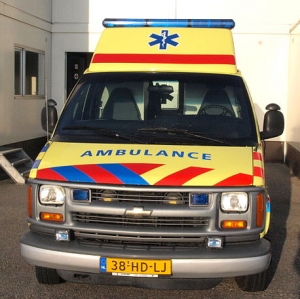
The health care industry is a prime target for innovation, and improvements are being made in a wide range of areas. There are new payment models, disease management programs, flexible care models and technology-driven cost reductions. One particularly interesting trend worth noting involves community paramedicine programs that reduce costly visits to emergency rooms (ERs).
Recently, data showed there were 136.3 million emergency room visits in the United States over a 12-month period. That statistic comes from the CDC (Centers for Disease Control and Prevention). And, the New England Healthcare Institute says that unnecessary emergency room visits easily exceed $38 billion of wasteful spending each year. The Institute reports that as many as 56 percent of all visits to emergency rooms are avoidable.
 Community paramedicine programs are being launched to reverse this trend. Cities are launching programs designed to reduce unnecessary visits to the ER by high-utilizers, or those who use emergency services recurrently. One such program in Minnesota sends paramedics to visit the homes of individuals who are identified as high emergency services users.
Community paramedicine programs are being launched to reverse this trend. Cities are launching programs designed to reduce unnecessary visits to the ER by high-utilizers, or those who use emergency services recurrently. One such program in Minnesota sends paramedics to visit the homes of individuals who are identified as high emergency services users.
Under this managed care approach, community paramedics are charged with evaluating health problems and concerns related to nutrition and safety. Surprisingly enough, the program has resulted in a decrease of ER services by 60 to 70 percent and that is a huge cost savings to the community.
San Diego’s community paramedicine program, the Resource Access Program (RAP), was originally launched in 2008 as a single pilot initiative. In the beginning, high-utilizers were identified by analyzing the number of ambulance transports by an individual in a given year. Individuals who had 50 or more transports in a year were put into the program.
During the initial RAP pilot program, the decline in patients transported to the ER resulted in a 32 percent decrease in Emergency Medical Services (EMS) charges. There was also a 47 percent reduction in the number of miles traveled by emergency vehicles in response to calls. Accounting for program costs, data shows an estimated net savings of about $700,000 a year for the city. The cost of the program was insignificant compared to the savings.
McKinney, Texas, although much smaller than San Diego with a population of about 150,000, has a similar program. However, it was determined that most of McKinney’s frequent 9-1-1 callers were not homeless or drug abusers; rather, most of the frequent users were older citizens or individuals with chronic illnesses. Although the program was initially launched by the fire department, the city was a full partner.
Beginning in June 2013, a total of 23 high-utilizers (patients who had made more than four 9-1-1 calls in the previous six months) were enrolled in the program. Each patient received scheduled home visits and a preliminary individual assessment of needs. Throughout the study, the average number of ER visits per patient decreased from 8.67 to 2.16 and there was a 75 percent reduction in ER visits. Based on the results of the initial study, the fire department and the city have expanded the program to establish the existing Community Healthcare Program (CHP).
These programs have proven that community paramedicine can have a significant positive impact on residents’ quality of life while reducing significant costs for the community. This is a trend worth noting and one that will likely come to cities where our readers reside in the future.
